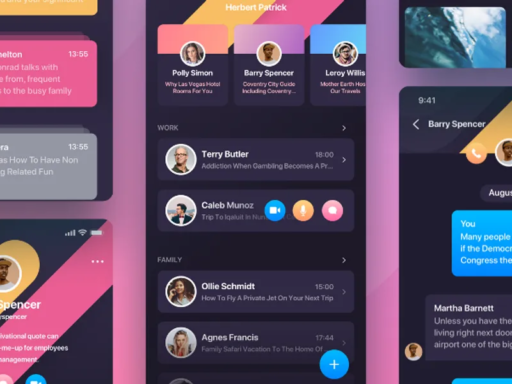Increasing numbers of architects and designers are moving into UX design in search of better pay and working conditions, we report as part of our Performance Review series.
Recruiters specialising in the user experience (UX) and user interface (UI) fields, which typically focus on app and website design, told Dezeen they are seeing significant interest from job-seeking architects and industrial designers.
Founder of UX recruitment agency Academy Adam Perlis is among those who have noticed the trend.
“Naturally, we do see a lot of folks making this career transition,” he said.
“There’s more opportunities, there’s higher pay, there’s more flexibility,” he added. “To me, then it becomes a no-brainer to switch.”
Architects often find that their expertise allows them to thrive in the world of UX design, Perlis explained.
“It’s generally a pretty natural fit,” he said. “Architects are usually really well trained in human-centred design from their studies, and so they already have this [way] of thinking like a UX or product designer would.”
“More and more design graduates are choosing UX roles”
Recruitment agency Intelligent People is also seeing growing interest from design graduates, according to co-founder Douglas Bates.
“More and more design graduates are now choosing UX roles as their preferred career path over traditional industrial design,” he told Dezeen.
“We’ve seen a strong rise in interest, particularly from industrial designers who are curious about how their skills can translate into the digital space.”
In January, Dezeen published survey data indicating that one in five people working in architecture and design are planning to leave their field, amid frustrations over pay and workloads.
Openings within architecture and design are also becoming increasingly few and far between, particularly for career beginners.
Meanwhile, the World Economic Forum’s annual report on future labour market trends for 2025 predicted that UX and UI designers will be among the fastest-growing jobs over the next five years.
“Tech and software are viewed as growing sectors that offer more career opportunities, and nearly all software companies place a high value on strong design and UX,” Bates said.
In nations like the UK with a relatively small number of design-led manufacturers, the tech industry is “a more attractive and logical career path” he added.
“The field is going to grow even more than it is available right now,” echoed Perlis.
“So as architects start to think about doing a career transition, they’re among the groups that do transition into this field and usually do it pretty well.”
“Supply is far outstripping demand” in UX design
Nevertheless, architects and designers seeking a move into UX design are unlikely to find a job easily.
The UX industry has recently become significantly more saturated, according to recruiter Nick Grantham.
“Over the past two to three years, the UX market has had a real squeeze and we’re now in a situation where supply is far outstripping demand,” said Grantham, an associate director at recruitment agency Zebra People.
“However, before then, we had a post-Covid boom and no doubt the market looked especially inviting for budding designers who may have seen the UX design industry as a way of progressing up the ranks quicker than they might have done compared to architecture or industrial design,” he added.
“There are, at the moment, more UX designers or product designers than there are jobs available,” agreed Perlis.
As with architecture and industrial design, the challenges are particularly acute for those seeking more entry-level jobs.
“Companies typically only hire for mid and senior level roles,” Perlis said.
“So there is this other chasm that unfortunately happens with junior talent who graduate school – they pay lots of money for their university and then have no opportunities in front of them,” he continued.
“When we have a job opportunity, we probably let about 1 per cent of the applicants past our screening process.”
The top image is by Charlesdeluvio via Unsplash.

Performance Review
This article is part of Dezeen’s Performance Review series interrogating the problems plaguing architecture and design, from difficult working conditions to ethical dilemmas.







